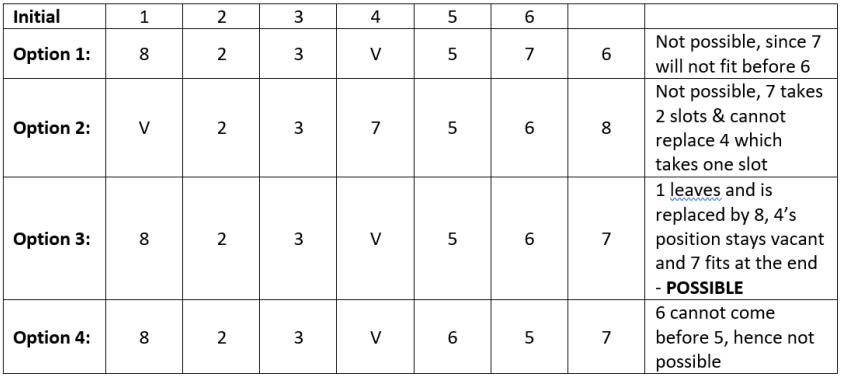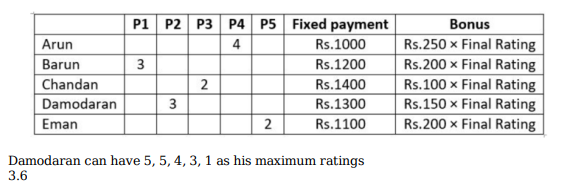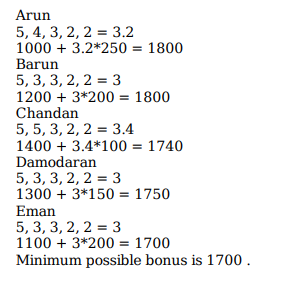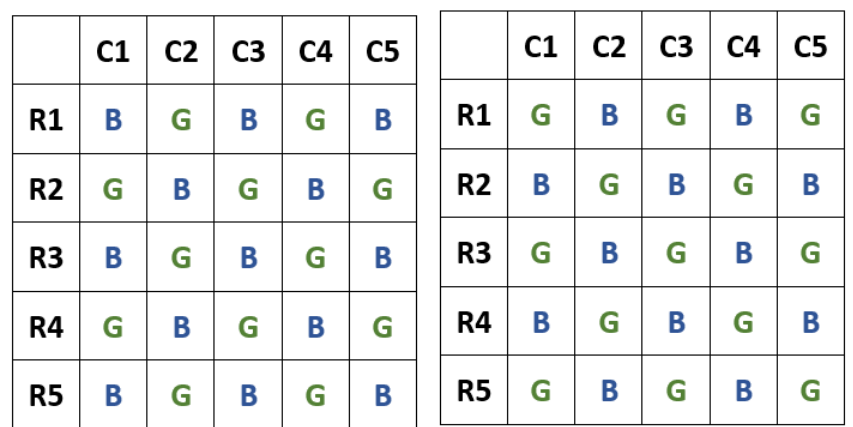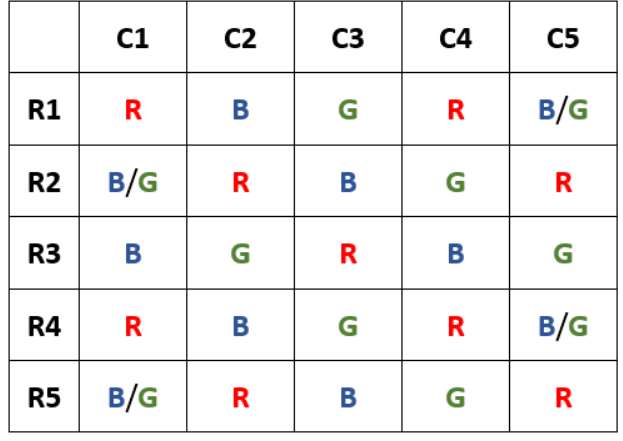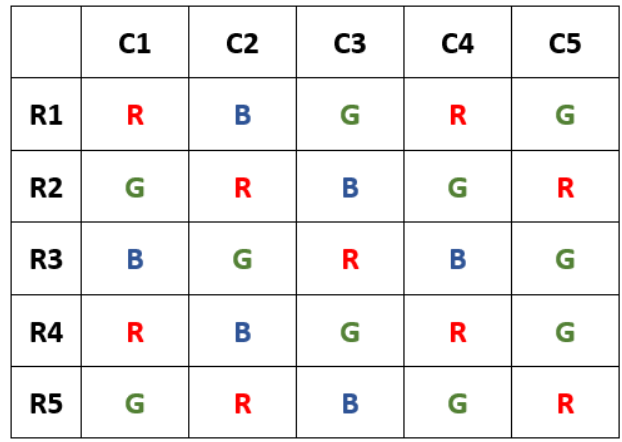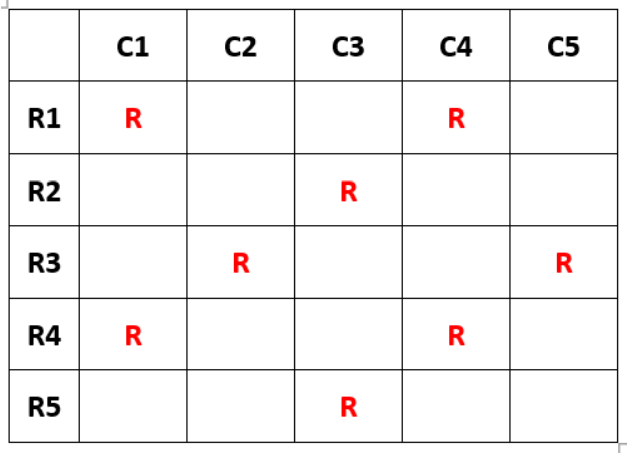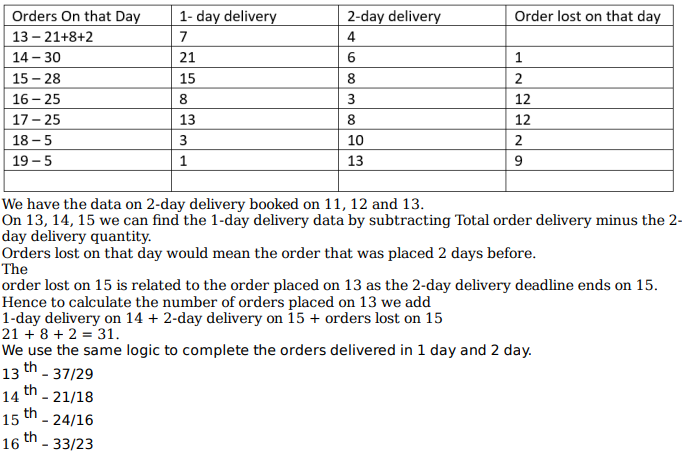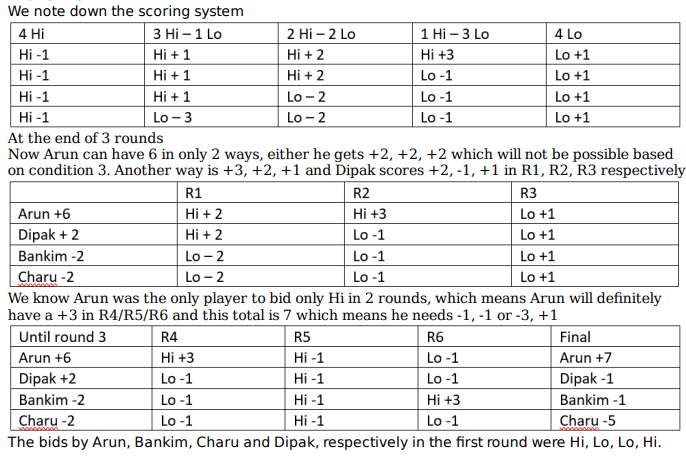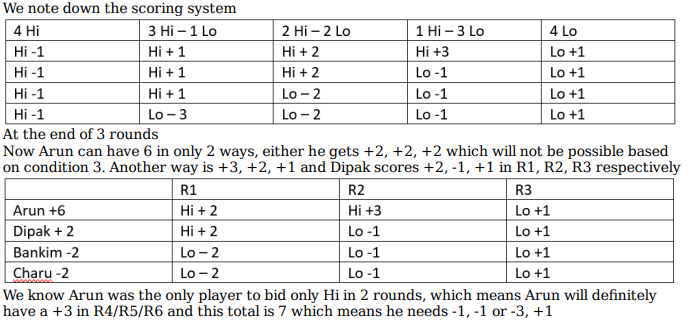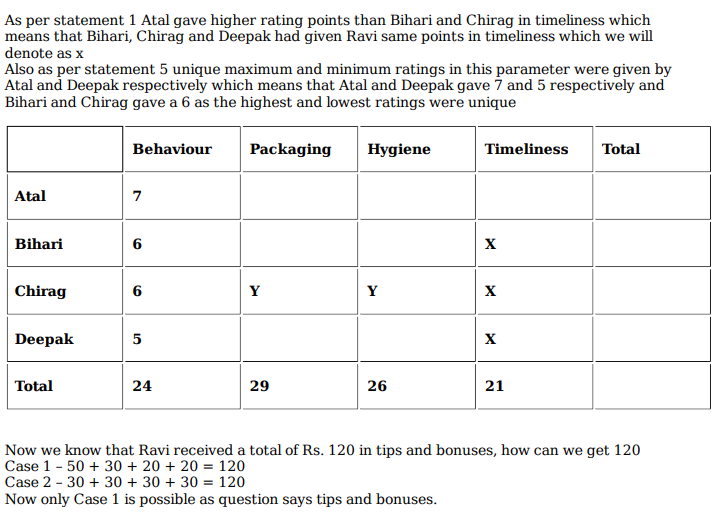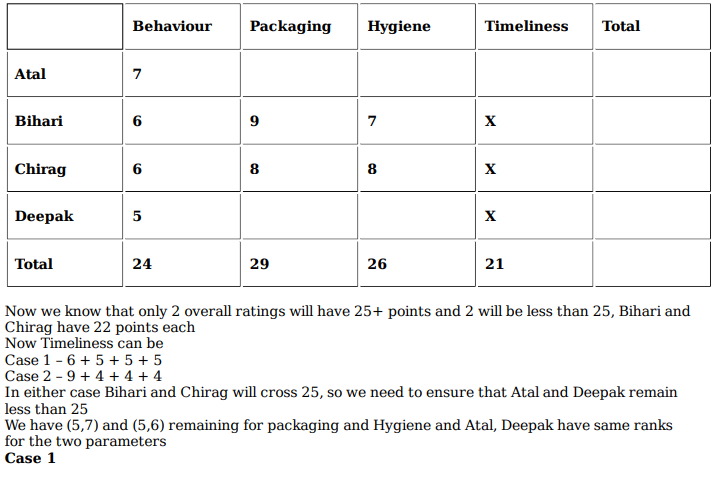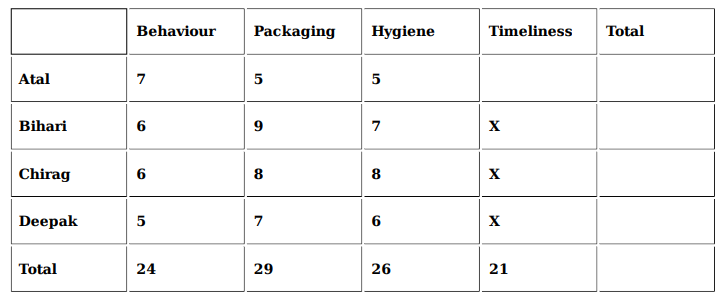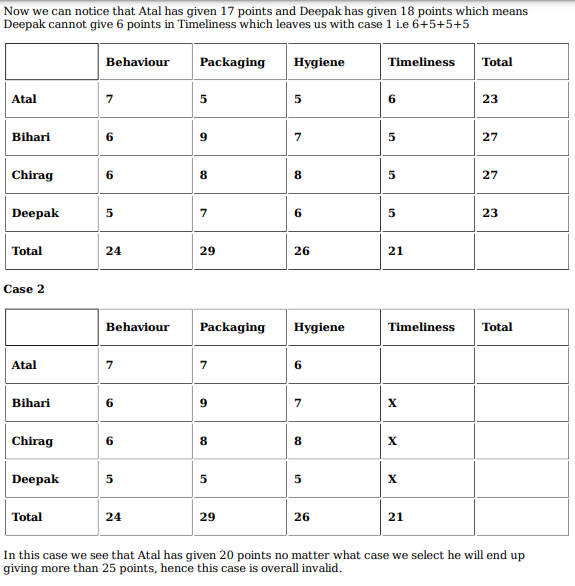Live Updates
• CATKing has launched new chat bot.

• New video on Logs has been released.
13.2K
Learners
asked the doubt

Previous Year Questions
Among all the 12 departments (i.e., the 3 departments in each of the 4 cities), what was the maximum percentage increase in sales amount from 2018 to 2019?
Video Explanation

What was the total sales amount, in Crore Rupees, in 2019 for the chain of departmental stores?
Video Explanation

A chain of departmental stores has outlets in Delhi, Mumbai, Bengaluru and Kolkata. The sales are categorized by its three departments – ‘Apparel’, ‘Electronics’, and ‘HomeDecor’. An Accountant has been asked to prepare a summary of the 2018 and 2019 sales amounts for an internal report. He has collated partial information and prepared the following table.
The following additional information is known.
1. The sales amounts in the Apparel departments were the same for Delhi and Kolkata in 2018.
2. The sales amounts in the Apparel departments were the same for Mumbai and Bengaluru in 2018. This sales amount matched the sales amount in the Apparel department for Delhi in 2019.
3. The sales amounts in the HomeDecor departments were the same for Mumbai and Kolkata in 2018.
4. The sum of the sales amounts of four Electronics departments increased by the same amount as the sum of the sales amounts of four Apparel departments from 2018 to 2019.
5. The total sales amounts of the four HomeDecor departments increased by Rs 70 Crores from 2018 to 2019.
6. The sales amounts in the HomeDecor departments of Delhi and Bengaluru each increased by Rs 20 Crores from 2018 to 2019.
7. The sales amounts in the Apparel departments of Delhi and Bengaluru each increased by the same amount in 2019 from 2018. The sales amounts in the Apparel departments of Mumbai and Kolkata also each increased by the same amount in 2019 from 2018.
8. The sales amounts in the Apparel departments of Delhi, Kolkata and Bengaluru in 2019 followed an Arithmetic Progression.
In HomeDecor departments of which cities were the sales amounts the highest in 2018 and 2019, respectively?
Video Explanation

What was the increase in sales amount, in Crore Rupees, in the Apparel department of Mumbai from 2018 to 2019?
Video Explanation

Among all the 12 departments (i.e., the 3 departments in each of the 4 cities), what was the maximum percentage increase in sales amount from 2018 to 2019?
Video Explanation

What was the total sales amount, in Crore Rupees, in 2019 for the chain of departmental stores?
Video Explanation

In HomeDecor departments of which cities were the sales amounts the highest in 2018 and 2019, respectively?
Video Explanation

A shopping mall has a large basement parking lot with parking slots painted in it along a single row. These slots are quite narrow; a compact car can fit in a single slot but an SUV requires two slots. When a car arrives, the parking attendant guides the car to the first available slot from the beginning of the row into which the car can fit.
For our purpose, cars are numbered according to the order in which they arrive at the lot. For example, the first car to arrive is given a number 1, the second a number 2, and so on. This numbering does not indicate whether a car is a compact or an SUV. The configuration of a parking lot is a sequence of the car numbers in each slot. Each single vacant slot is represented by letter V.
For instance, suppose cars numbered 1 through 5 arrive and park, where cars 1, 3 and 5 are compact cars and 2 and 4 are SUVs. At this point, the parking lot would be described by the sequence 1, 2, 3, 4, 5. If cars 2 and 5 now vacate their slots, the parking lot would now be described as 1, V, V, 3, 4. If a compact car (numbered 6) arrives subsequently followed by an SUV (numbered 7), the parking lot would be described by the sequence 1, 6, V, 3, 4, 7.
Answer the following questions INDEPENDENTLY of each other.
Initially cars numbered 1, 2, 3, and 4 arrive among which 1 and 4 are SUVs while 2 and 3 are compact cars. Car 1 then leaves, followed by the arrivals of car 5 (a compact car) and car 6 (an SUV). Car 4 then leaves. Then car 7 (an SUV) and car 8 (a compact car) arrive. At this moment, which among the following numbered car is parked next to car 3?
Video Explanation

Suppose eight cars have arrived, of which two have left. Also suppose that car 4 is a compact and car 7 is an SUV. Which of the following is a POSSIBLE current configuration of the parking lot?
Video Explanation

Suppose the sequence at some point of time is 4, 5, 6, V, 3. Which of the following is NOT necessarily true?
Video Explanation

Suppose that car 4 is not the first car to leave and that the sequence at a time between the arrival of the car 7 and car 8 is V, 7, 3, 6, 5. Then which of the following statements MUST be false?
Video Explanation

Initially cars numbered 1, 2, 3, and 4 arrive among which 1 and 4 are SUVs while 2 and 3 are compact cars. Car 1 then leaves, followed by the arrivals of car 5 (a compact car) and car 6 (an SUV). Car 4 then leaves. Then car 7 (an SUV) and car 8 (a compact car) arrive. At this moment, which among the following numbered car is parked next to car 3?
Video Explanation

Suppose eight cars have arrived, of which two have left. Also suppose that car 4 is a compact and car 7 is an SUV. Which of the following is a POSSIBLE current configuration of the parking lot?
Video Explanation

Suppose the sequence at some point of time is 4, 5, 6, V, 3. Which of the following is NOT necessarily true?
Video Explanation

Suppose that car 4 is not the first car to leave and that the sequence at a time between the arrival of the car 7 and car 8 is V, 7, 3, 6, 5. Then which of the following statements MUST be false?
Video Explanation

The local office of the APP-CAB company evaluates the performance of five cab drivers, Arun,
Barun, Chandan, Damodaran, and Eman for their monthly payment based on ratings in five
different parameters (P1 to P5) as given below:
P1: timely arrival
P2: behaviour
P3: comfortable ride
P4: driver's familiarity with the route
P5: value for money
Based on feedback from the customers, the office assigns a rating from 1 to 5 in each of these
parameters. Each rating is an integer from a low value of 1 to a high value of 5. The final rating
of a driver is the average of his ratings in these five parameters. The monthly payment of the
drivers has two parts – a fixed payment and final rating-based bonus. If a driver gets a rating of 1
in any of the parameters, he is not eligible to get bonus. To be eligible for bonus a driver also
needs to get a rating of five in at least one of the parameters.
The partial information related to the ratings of the drivers in different parameters and the
monthly payment structure (in rupees) is given in the table below:

The following additional facts are known.
1. Arun and Barun have got a rating of 5 in exactly one of the parameters. Chandan has got a
rating of 5 in exactly two parameters.
2. None of drivers has got the same rating in three parameters.
If Damodaran does not get a bonus, what is the maximum possible value of his final rating?
Video Explanation

If Eman gets a bonus, what is the minimum possible value of his final rating?
Video Explanation

If all five drivers get bonus, what is the minimum possible value of the monthly payment (in rupees) that a driver gets?
Video Explanation

If all five drivers get bonus, what is the maximum possible value of the monthly payment (in rupees) that a driver gets?
Video Explanation

If Damodaran does not get a bonus, what is the maximum possible value of his final rating?
Video Explanation

If Eman gets a bonus, what is the minimum possible value of his final rating?
Video Explanation

If all five drivers get bonus, what is the minimum possible value of the monthly payment (in rupees) that a driver gets?
Video Explanation

If all five drivers get bonus, what is the maximum possible value of the monthly payment (in rupees) that a driver gets?
Video Explanation

Twenty five coloured beads are to be arranged in a grid comprising of five rows and five columns. Each cell in the grid must contain exactly one bead. Each bead is coloured either Red, Blue or Green.
While arranging the beads along any of the five rows or along any of the five columns, the rules given below are to be followed:
1. Two adjacent beads along the same row or column are always of different colours.
2. There is at least one Green bead between any two Blue beads along the same row or column.
3. There is at least one Blue and at least one Green bead between any two Red beads along the same row or column.
Every unique, complete arrangement of twenty five beads is called a configuration.
The total number of possible congurations using beads of only two colours is:
Video Explanation

What is the maximum possible number of Red beads that can appear in any conguration?
Video Explanation

What is the minimum number of Blue beads in any conguration?
Video Explanation

The total number of possible congurations using beads of only two colours is:
Video Explanation

What is the maximum possible number of Red beads that can appear in any conguration?
Video Explanation

What is the minimum number of Blue beads in any conguration?
Video Explanation


Suppose vial C tests positive and vials A, E and H test negative. Which patient has the disease?
Video Explanation

Suppose vial A tests positive and vials D and G test negative. Which of the following vials should we test next to identify the patient with the disease?
Video Explanation

Which of the following combinations of test results is NOT possible?
Video Explanation

Suppose vial C tests positive and vials A, E and H test negative. Which patient has the disease?
Video Explanation

Suppose vial A tests positive and vials D and G test negative. Which of the following vials should we test next to identify the patient with the disease?
Video Explanation

Which of the following combinations of test results is NOT possible?
Video Explanation

What was the total number of schools having exactly three of the four facilities?
Video Explanation

What was the number of schools having only facilities F1 and F4?
Video Explanation

A survey of 600 schools in India was conducted to gather information about their online teaching learning processes (OTLP).
The following four facilities were studied.
F1: Own software for OTLP
F2: Trained teachers for OTLP
F3: Training materials for OTLP
F4: All students having Laptops
The following observations were summarized from the survey.
1. 80 schools did not have any of the four facilities – F1, F2, F3, F4.
2. 40 schools had all four facilities.
3. The number of schools with only F1, only F2, only F3, and only F4 was 25, 30, 26 and 20 respectively.
4. The number of schools with exactly three of the facilities was the same irrespective of which three were considered.
5. 313 schools had F2.
6. 26 schools had only F2 and F3 (but neither F1 nor F4).
7. Among the schools having F4, 24 had only F3, and 45 had only F2.
8. 162 schools had both F1 and F2.
9. The number of schools having F1 was the same as the number of schools having F4.
What was the number of schools having facilities F2 and F4?
Video Explanation

What was the number of schools having only facilities F1 and F3?
Video Explanation

What was the number of schools having only facilities F1 and F4?
Video Explanation

What was the total number of schools having exactly three of the four facilities?
Video Explanation

What was the number of schools having facilities F2 and F4?
Video Explanation

What was the number of schools having only facilities F1 and F3?
Video Explanation

The average time taken to deliver orders booked on a particular day is computed as follows. Let the number of orders delivered the next day be x and the number of orders delivered the day after be y. Then the average time to deliver order is (x+2y)/(x+y). On which of the following days was the average time taken to deliver orders booked the least?
Video Explanation

XYZ organization got into the business of delivering groceries to home at the beginning of the last month. They have a two-day delivery promise. However, their deliveries are unreliable. An order booked on a particular day may be delivered the next day or the day after. If the order is not delivered at the end of two days, then the order is declared as lost at the end of the second day. XYZ then does not deliver the order, but informs the customer, marks the order as lost, returns the payment and pays a penalty for non-delivery.
The following table provides details about the operations of XYZ for a week of the last month. The first column gives the date, the second gives the cumulative number of orders that were booked up to and including that day. The third column represents the number of orders delivered on that day. The last column gives the cumulative number of orders that were lost up to and including that day.
It is known that the numbers of orders that were booked on the 11th, 12th, and 13th of the last month that took two days to deliver were 4, 6, and 8 respectively.
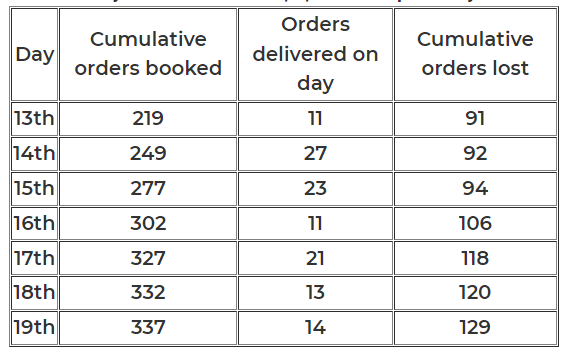
Among the following days, the largest fraction of orders booked on which day was lost?
Video Explanation

On which of the following days was the number of orders booked the highest?
Video Explanation

The delivery ratio for a given day is defined as the ratio of the number of orders booked on that day which are delivered on the next day to the number of orders booked on that day which are delivered on the second day after booking. On which of the following days, was the delivery ratio the highest?
Video Explanation

The average time taken to deliver orders booked on a particular day is computed as follows. Let the number of orders delivered the next day be x and the number of orders delivered the day after be y. Then the average time to deliver order is (x+2y)/(x+y). On which of the following days was the average time taken to deliver orders booked the least?
Video Explanation

Among the following days, the largest fraction of orders booked on which day was lost?
Video Explanation

On which of the following days was the number of orders booked the highest?
Video Explanation

The delivery ratio for a given day is defined as the ratio of the number of orders booked on that day which are delivered on the next day to the number of orders booked on that day which are delivered on the second day after booking. On which of the following days, was the delivery ratio the highest?
Video Explanation

In which of the following rounds, was Arun DEFINITELY the only player to bid Hi?
Video Explanation

The Hi-Lo game is a four-player game played in six rounds. In every round, each player chooses to bid Hi or Lo. The bids are made simultaneously. If all four bid Hi, then all four lose 1 point each. If three players bid Hi and one bids Lo, then the players bidding Hi gain 1 point each and the player bidding Lo loses 3 points. If two players bid Hi and two bid Lo, then the players bidding Hi gain 2 points each and the players bidding Lo lose 2 points each. If one player bids Hi and three bid Lo, then the player bidding Hi gains 3 points and the players bidding Lo lose 1 point each. If all four bid Lo, then all four gain 1 point each.
Four players Arun, Bankim, Charu, and Dipak played the Hi-Lo game. The following facts are known about their game:
1. At the end of three rounds, Arun had scored 6 points, Dipak had scored 2 points, Bankim and Charu had scored -2 points each.
2. At the end of six rounds, Arun had scored 7 points, Bankim and Dipak had scored -1 point each, and Charu had scored -5 points.
3. Dipak’s score in the third round was less than his score in the first round but was more than his score in the second round.
4. In exactly two out of the six rounds, Arun was the only player who bid Hi.
What were the bids by Arun, Bankim, Charu and Dipak, respectively in the first round?
Video Explanation

In how many rounds did Arun bid Hi?
Video Explanation

In how many rounds did Bankim bid Lo?
Video Explanation

In how many rounds did all four players make identical bids?
Video Explanation

In how many rounds did Dipak gain exactly 1 point?
Video Explanation

In which of the following rounds, was Arun DEFINITELY the only player to bid Hi?
Video Explanation

What were the bids by Arun, Bankim, Charu and Dipak, respectively in the first round?
Video Explanation

In how many rounds did Arun bid Hi?
Video Explanation

In how many rounds did Bankim bid Lo?
Video Explanation

In how many rounds did all four players make identical bids?
Video Explanation

In how many rounds did Dipak gain exactly 1 point?
Video Explanation

Who got the plot with the smallest number of trees and how many trees did that plot have?
Video Explanation

A farmer had a rectangular land containing 205 trees. He distributed that land among his four daughters – Abha, Bina, Chitra and Dipti by dividing the land into twelve plots along three rows (X,Y,Z) and four Columns (1,2,3,4) as shown in the figure below:

The plots in rows X, Y, Z contained mango, teak and pine trees respectively. Each plot had trees in non-zero multiples of 3 or 4 and none of the plots had the same number of trees. Each daughter got an even number of plots. In the figure, the number mentioned in top left corner of a plot is the number of trees in that plot, while the letter in the bottom right corner is the first letter of the name of the daughter who got that plot (For example, Abha got the plot in row Y and column 1 containing 21 trees). Some information in the figure got erased, but the following is known:
1. Abha got 20 trees more than Chitra but 6 trees less than Dipti.
2. The largest number of trees in a plot was 32, but it was not with Abha.
3. The number of teak trees in Column 3 was double of that in Column 2 but was half of that in Column 4.
4. Both Abha and Bina got a higher number of plots than Dipti.
5. Only Bina, Chitra and Dipti got corner plots.
6. Dipti got two adjoining plots in the same row.
7. Bina was the only one who got a plot in each row and each column.
8. Chitra and Dipti did not get plots which were adjacent to each other (either in row / column / diagonal).
9. The number of mango trees was double the number of teak trees.
Which of the following is the correct sequence of trees received by Abha, Bina, Chitra and Dipti in that order?
Video Explanation

Who got the plot with the smallest number of trees and how many trees did that plot have?
Video Explanation

Which of the following is the correct sequence of trees received by Abha, Bina, Chitra and Dipti in that order?
Video Explanation

The COMPLETE list of customers who gave the maximum total rating points to Ravi is
Video Explanation

What rating did Atal give on Timeliness?
Video Explanation

Previous year papers
2023
2022
2021
2020
2019
2018




